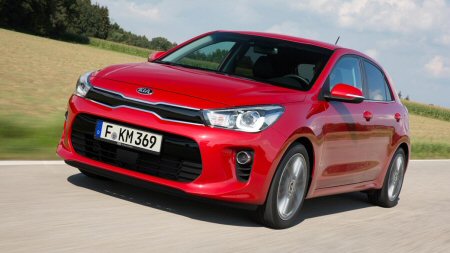
2017 Kia Rio reviewed
The Kia Rio is an alternative to hugely popular cars like the Vauxhall Corsa and the Ford Fiesta. The Rio has been around for a good while and we think itís fair to say that itís fallen off the radar a little bit. So, Kia are hoping that this new incarnation will make people sit up and take notice.
In terms of how it looks, itís not really going to stand out from the crowd. However, itís longer and lower than the old Rio which Kia says gives it a sleeker and sportier look. Although looking at it youíre probably going to agree that itís not the most exciting looking car in its class. It wears Kiaís familiar tiger-nose grille at the front and has a tighter and more compact design at the rear.
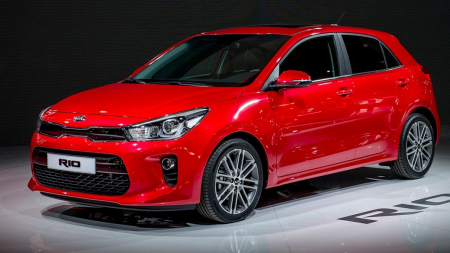
Kia say that an increasing number of buyers are opting for cars in this class as their main family car and we can believe it. So, for the Rio practicality is really going to matter. Despite the rather compact rear end, when you open up the boot it reveals a good sized space. Itís larger than the boot found on the Vauxhall Corsa, on the Ford Fiesta and also on the Volkswagen Polo. Itís not quite as big as the boot on the Skoda Fabia but itís only the Honda Jazz that can really trump it properly when it comes to size and practicality. Taking a closer look at the boot itself youíll find the load lip a bit of a pain when lifting heavier objects in. However on the plus side, the rear seats do split and when they go down so you get a really practical and large load space.
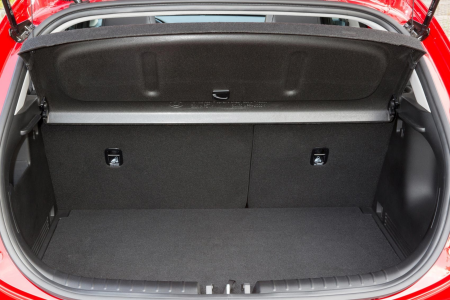
When you take a seat in the back youíll find that leg room is pretty good and the same goes for head room too. However, where we feel it slightly lets itself down is the lack of all the little niceties and fripperies that you like to find in a family car. For example, you do get storage compartments in the doors for bottles but theyíll have to be very small bottles. You also donít get any seat pockets to pack your magazines or tablets into Ė in fact only the person sat behind the passenger seat is lucky enough to get one of these. On the plus side you do get two iSoFix seat points and we love the fact that there is no annoying transmission tunnel eating into the leg space in front of the centre seat. Itís worth bearing in mind that the Rio only comes in a 5-door version.
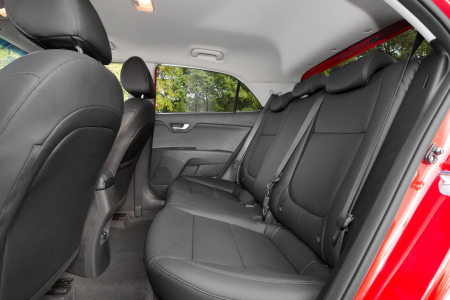
Like all Kias the trim levels are logically named and easy to understand. The range starts with ďOneĒ which includes air conditioning, heated mirrors, Bluetooth and split folding rear seats. The ďTwoĒ trim adds alloy wheels, rear electric windows, digital radio, a reversing camera, USB ports and cruise control as well as vital safety kit like autonomous emergency breaking and lane departure warning. The ďThreeĒ trim gives you bigger alloys, man-made leather upholstery, a large 7-inch screen, heated seats, rain sensing wipers, sat nav and smart phone connectivity.
When you sit inside the front cabin the feeling you get is that it isnít all that cohesive. In fact, it almost seems as though things have been taken from other models of car and then somehow assembled together. However, when you do take a closer look you will find that itís actually quite fresh, modern and simple which certainly goes in its favour. Everything is centred around the infotainment screen which is easy enough to use. Other than that it feels well built although it doesnít quite match a VW Golf in terms of quality. You get plenty of practical storage spaces, such as a good sized glove box, central storage bins, cup holders and decent size door bins.
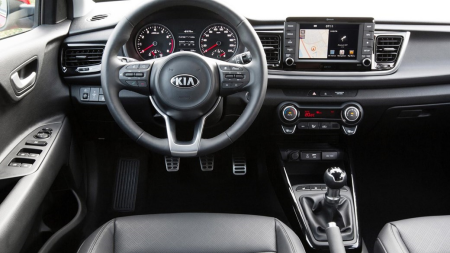
One of the glaring omissions from the old Kia Rio was the turbo charged petrol engine which is something of a must-have in the super-mini class of late. The new car rectifies this with the addition of a 1.0 litre TDGi engine. Like most small petrol turbo engines itís a strong performer and sounds pretty good too. However, itís not quite as impressive as similar engines found in the Corsa and Fiesta. Itís official economy figure is just under 63 miles to the gallon (mpg) which is a little worse than the equivalent Fiesta but better than the VW Polo and its sister cars the SEAT Ibiza and Skoda Fabia. Despite having a rather peppy engine underneath the bonnet weíre afraid to say that the Rio isnít all that fun to drive. You donít really get much feel for whatís going on through the steering wheel. Although you could argue that buyers of this car arenít likely to be heading off to their nearest B-road in search of a fantastic road trip, cars like the Ford Fiesta and even the Nissan Micra will definitely put a bigger smile on your face.
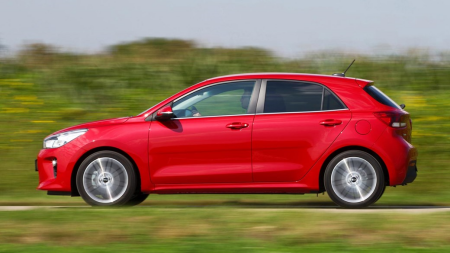
Apart from the turbo petrol engines, new Rio also offer less expensive, less efficient and less powerful 1.25 and 1.4 litre petrols as well as a 1.4 litre diesel with two different power outputs. If you want or need an automatic gearbox with your Rio then youíre stuck with the 1.4 litre petrol engine and the ďTwoĒ trim level. Otherwise the 1.25 litre petrol engine comes with a 5-speed manual gearbox whilst every other engine gets a six-speed transmission.
The most efficient Rio engine is the 1.4 litre diesel which can officially return more than 80 mpg in its less powerful 76 break hose power (bhp) form. The turbo charged 1.0 litre petrol is up next and the decent fuel economy it offers should make up for the fact that itís more expensive to buy than the less efficient 1.2 and 1.4 litre petrols.
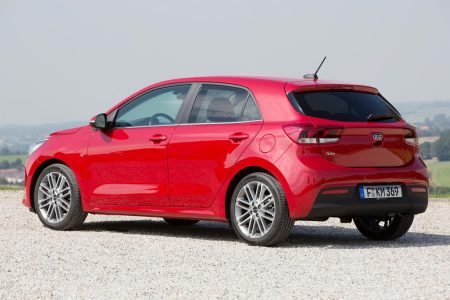
Overall the Kia Rio can be described as a sensible super-mini with an up to date engine range that should prove to be cost-effective in the long run. Also, we mustnít forget that impressive 7-year warranty. Itís just a shame that it doesnít have more fun factor both in terms of how it drives and also in terms of how it looks.
If youíre interested in a new or used Kia Rio then check out the deals we have on the DesperateSeller.co.uk website today!













